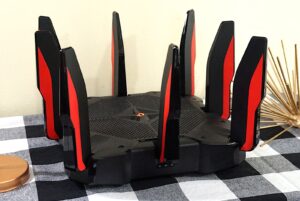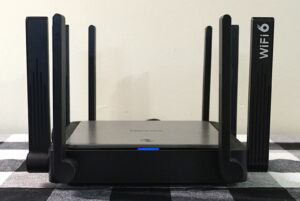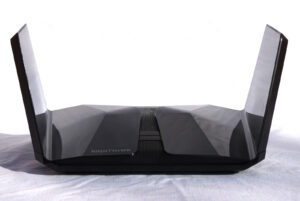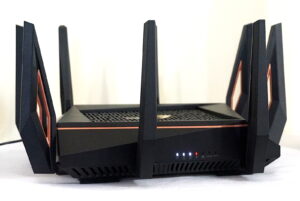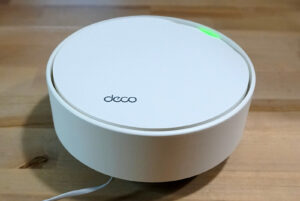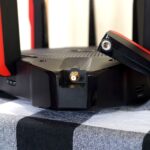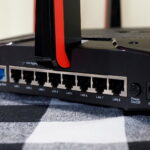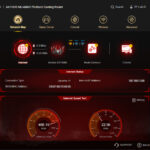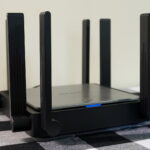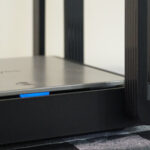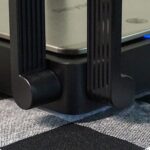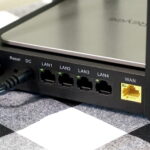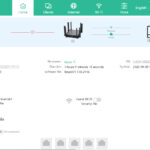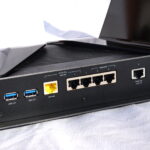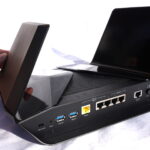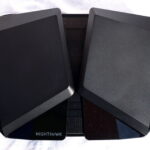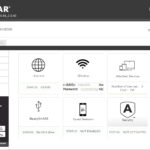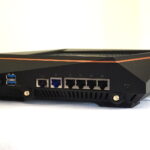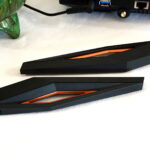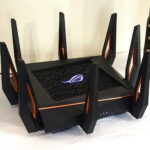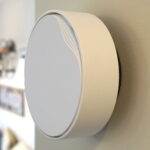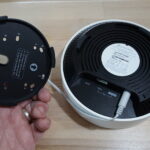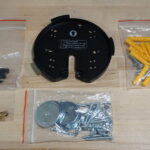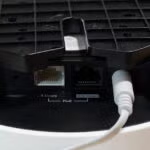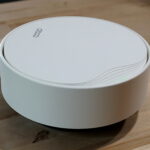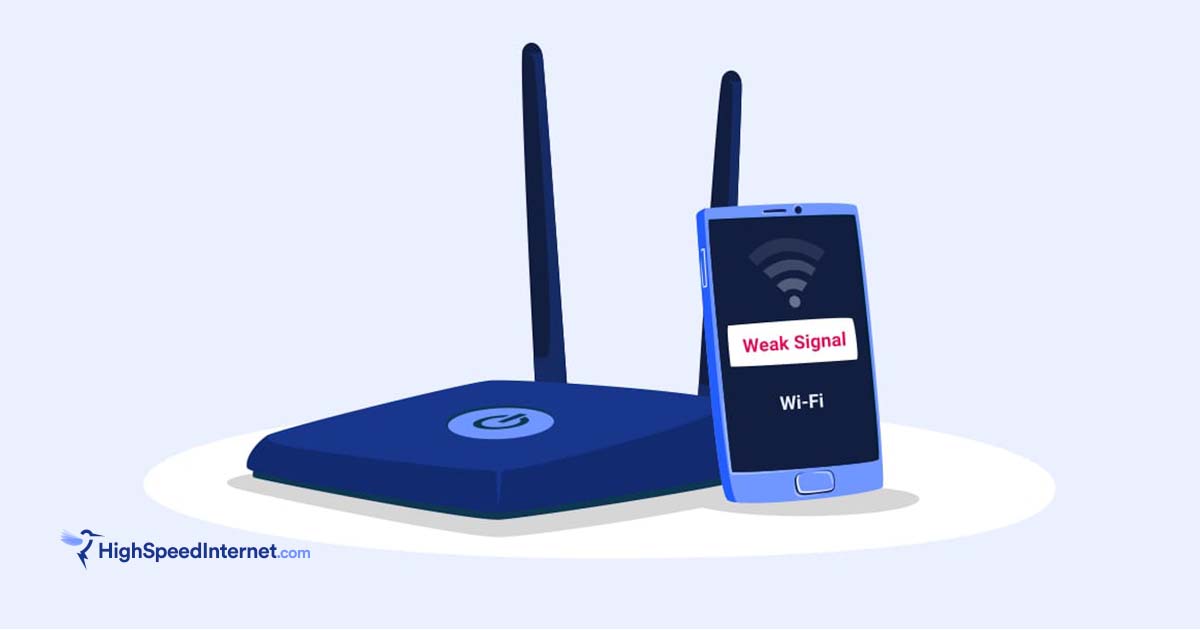The Fastest Routers We’ve Tested
We tested dozens of routers to see which ones provide the fastest Wi-Fi speeds on the planet.
Aug 3, 2023 | Share
Equipment Guides, Internet Speed Guides
-
Best overallTP-Link Archer AX11000
- $264.99*
- Free parental controls
- Lots of wired ports
- No real gaming tools
-
Best for budgetsReyee RG-E5
- $119.99*
- Free security
- Good long range speeds
- No multi-gig support
-
Best for speedNETGEAR Nighthawk RAXE500
- $543.99*
- Fastest Wi-Fi speeds
- 6 GHz band connectivity
- Subscription-locked features
-
Best for gamersASUS ROG Rapture GT-AX11000
- $449.87*
- Real gaming tools
- Built-in VPN tools
- High price
-
Best for meshTP-Link Deco X50-PoE
- $299.99*
- Power over Ethernet
- Easy to use interface
- Limited Wi-Fi control
*Amazon.com prices (as of 8/3/23 12:37 MST). Read full disclaimer.
Our pick: Which router is the best for speed?
TP-Link’s Archer AX11000 is our pick as the best router for speed. We ran dozens of routers through our battery of tests, and the AX11000 performed exceptionally well, hitting high speeds even outside the confines of the building. It’s not the fastest router we have in stock, but it easily handles multiple devices and fast connections with ease. Plus, features like free antivirus and multi-gig internet connectivity make it our favorite router for speed.
How we test routers
We vigorously test routers to see how well they stack up against the competition in speed and range. We also evaluate the setup process and dig into the web and mobile apps to see if they’re easy or difficult to use. Check out our methodology section for more information.
The 5 fastest routers we’ve tested
- Best overall: TP-Link Archer AX11000
- Best for budgets: Reyee RG-E5
- Best for speed: NETGEAR Nighthawk RAXE500
- Best for gamers: ASUS ROG Rapture GT-AX11000
- Best for mesh: TP-Link Deco X50-PoE
Compare router speeds and prices
| Best for | Model | Max throughput | Tested speed @ 40 ft.† | Price* | Get it |
|---|---|---|---|---|---|
| Best overall | TP-Link Archer AX11000 | 11,000Mbps | 692Mbps | $264.99 | View on Amazon |
| Best for budgets | Reyee RG-E5 | 3,200Mbps | 636Mbps | $119.99 | View on Amazon |
| Best for speed | NETGEAR Nighthawk RAXE500 | 11,000Mbps | 693Mbps | $543.99 | View on Amazon |
| Best for gamers | ASUS ROG Rapture GT-AX11000 | 11,000Mbps | 642Mbps | $449.87 | View on Amazon |
| Best for mesh | TP-Link Deco X50-PoE | 3,000Mbps | 366Mbps | $299.99 | View on Amazon |
* Amazon.com prices (as of 8/3/23 12:37 MST). Read full disclaimer.
† Speed recorded using a Wi-Fi 6 client and an 80 MHz channel.
What should you look for in a superfast router?
Right off the bat, you need to ensure the router supports multi-gig internet if you want the fastest Wi-Fi speeds you can get. There’s no point in getting a router with incredible wireless speeds if it only supports Gigabit internet at the most. We list routers with a multi-gig WAN port, but some link aggregation configurations work too.
You also need a router with Wi-Fi 6, at the least. Actually, we suggest Wi-Fi 6E and the new 6 GHz connection for real-world Gig+ wireless speeds, as you’re not bombarded with the radar woes plaguing the 5 GHz channels.
Do you have the best plan to go with your superfast router?
If not, be sure to enter your zip code below to see what options are available to you.
Best overall—TP-Link Archer AX11000
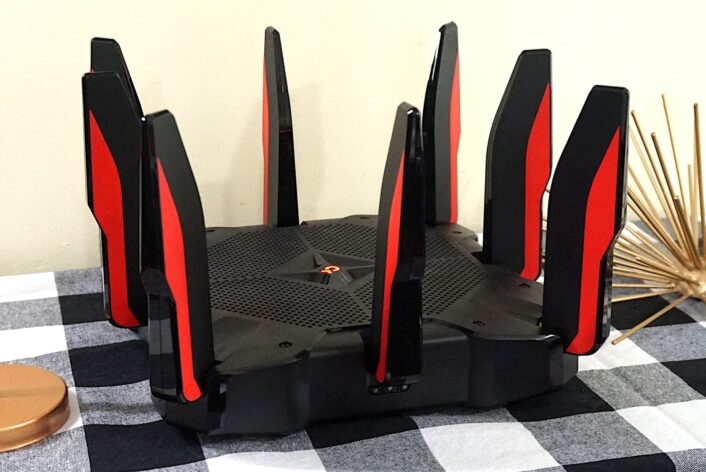 |
|
A great router with great speeds at a great price |
|
Score:4out of 5 |
The Archer AX11000 is one of our favorite routers, hands down. It has great speeds, lots of ports for wired connectivity, and free Trend Micro security to boot. You simply can’t go wrong. |
| Pros | Cons |
|
|
Price: $264.99*
*Amazon.com price (as of 8/3/23 12:37 MST). Read full disclaimer.
Expand for product details and ratings
| Category | Score* | Summary |
| Performance | 4 | Has some of the best Wi-Fi 6 speeds around based on our testing. |
| Features | 4 | Includes free Trend Micro antivirus, decent parental controls, and media sharing. |
| Design | 4 | Packs 8 LAN ports, USB connectivity, and 3 Wi-Fi bands. |
| Setup | 4 | Offers a smooth and quick process via the app or web browser. |
| Ease of use | 4 | Presents the best web interface we’ve seen on a TP-Link router. |
* out of 5 points
What we like about it: The Archer AX11000 has the second-fastest close-range speeds we’ve tested to date. And for the price, it’s a steal with free Trend Micro security, a built-in VPN server, and more.
What we wish it did better: While the whole setup process is doable, TP-Link should split the setup process into Basic and Advanced modes so novice users can jump into network management faster.
Why do we recommend it? The Archer AX11000 is one of our favorite routers. You can’t beat what you get for this price. It has great speeds, long range, free Trend Micro antivirus, and multi-gig internet support. If you want a superfast router at an affordable price, this is the one for you.
Alternative: The Archer AX6000 is a cheaper two-band version if you want to save a little money.
Tested speeds at a glance
| 5 GHz max speed | 2 feet | 40 feet | 120 feet |
| 1,200 | 860 | 692 | 282 |
* Speeds in megabits per second (Mbps) using a Wi-Fi 6 client and an 80 MHz channel.
| Wi-Fi specs | Wired specs |
|
|
Best for budgets—Reyee RG-E5
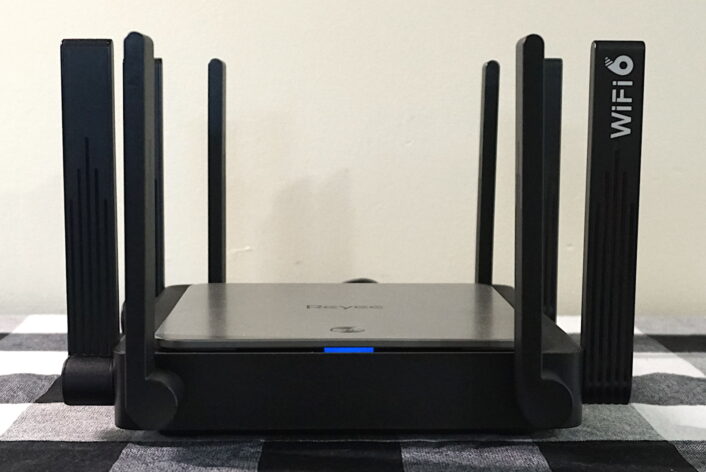 |
|
A budget-oriented router with amazing range |
|
Score:3.8out of 5 |
The Reyee RG-E5 is the only router on our list that doesn’t support multi-gig connections. But its speeds at long range are fantastic. |
| Pros | Cons |
|
|
Price: $119.99*
*Amazon.com price (as of 8/3/23 12:37 MST). Read full disclaimer.
Expand for product details and ratings
| Category | Score* | Summary |
| Performance | 4 | Pushes incredible speeds at a long range for a budget-priced router. |
| Features | 3 | Includes free security and cloud-based network management. |
| Design | 3 | Lacks multi-gig internet support and USB connectivity. |
| Setup | 4 | Offers a quick and painless setup experience. |
| Ease of use | 4 | Presents a great experience across the web interface and app. |
* out of 5 points
What we like about it: The Reyee RG-E5 doesn’t support multi-gig internet, it’s true, but it currently has the highest tested speed average at 120 feet. There are a few other callouts, too, like free security and basic parental controls.
What we wish it did better: We don’t expect much at this price, but you can get VPN tools and media sharing on other similarly-priced routers.
Why do we recommend it? The Reyee RG-E5 is a great budget-oriented router, even though it seems geared toward business owners. It has an incredible range, cloud-based network management, and mesh support.
Tested speeds at a glance
| 5 GHz max speed | 2 feet | 40 feet | 120 feet |
| 1,200 | 843 | 636 | 330 |
* Speeds in megabits per second (Mbps) using a Wi-Fi 6 client and an 80 MHz channel.
| Wi-Fi specs | Wired specs |
|
|
Best for speed—NETGEAR Nighthawk RAXE500
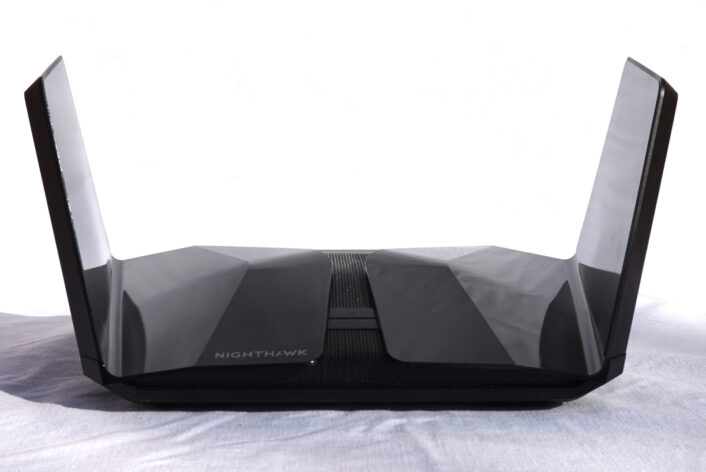 |
|
A high-price Wi-Fi rocket with incredible range |
|
Score:4.2out of 5 |
The RAXE500 looks like a gaming router, but it’s not. It’s an expensive speedster blazing with the highest speeds we’ve recorded to date. |
| Pros | Cons |
|
|
Price: $543.99*
*Amazon.com price (as of 8/3/23 12:37 MST). Read full disclaimer.
Expand for product details and ratings
| Category | Score* | Summary |
| Performance | 5 | Pushes the fastest speeds we’ve seen on a standalone router to date. |
| Features | 3 | Locks most parental controls and security features behind subscriptions. |
| Design | 4 | Employs the 6 GHz Wi-Fi band for more attainable Gig+ wireless speeds. |
| Setup | 4 | Gets you up and running in no time flat. |
| Ease of use | 3 | Presents a better app experience than the web interface. |
* out of 5 points
What we like about it: The RAXE500 is no joke. It’s the only router we’ve tested to date that still registers throughput at 160 feet. The new 6 GHz wireless connection promises even more reliable Wi-Fi speeds.
What we wish it did better: The RAXE500 and RAX200 require subscriptions to get the most out of them, including security and parental controls.
Why do we recommend it? If long range is what you need, then you can’t beat the RAXE500 and RAX200 routers. They’re speed demons at close range, too, plus the RAXE500 model gives you access to the 6 GHz band for more attainable real-world Gig+ wireless speeds.
Alternative: The Nighthawk RAX200 is a cheaper version if you want to save a little money. It swaps out the third 6 GHz band for a 5 GHz one.
Tested speeds at a glance
| 5 GHz max speed | 2 feet | 40 feet | 120 feet |
| 1,200 | 878 | 693 | 285 |
* Speeds in megabits per second (Mbps) using a Wi-Fi 6 client and an 80 MHz channel.
| Wi-Fi specs | Wired specs |
|
|
Best for gamers—ASUS ROG Rapture GT-AX11000
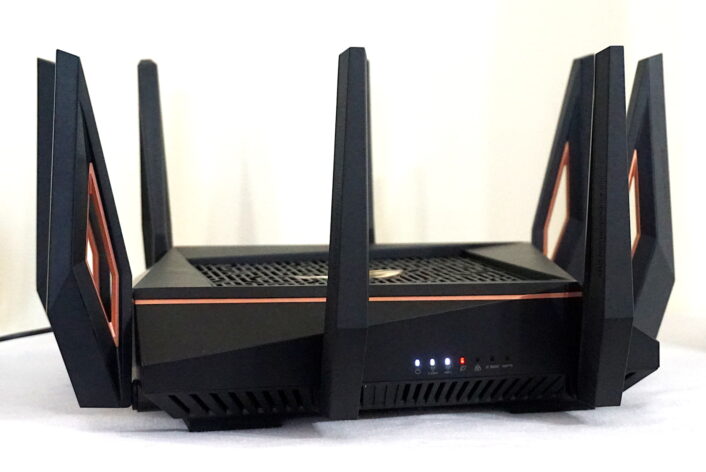 |
|
A fast, feature-packed router for everyone |
|
Score:4.1out of 5 |
The GT-AX11000 isn’t our top pick due to its price, but oh boy is it loaded. There’s plenty to love, from free security to Multi-Gig internet support. |
| Pros | Cons |
|
|
Price: $449.87*
*Amazon.com price (as of 8/3/23 12:37 MST). Read full disclaimer.
Expand for product details and ratings
| Category | Score* | Summary |
| Performance | 4 | Broadcasts great speeds based on our tests, even at 120 feet. |
| Features | 5 | Includes parental controls, free security, and loads more. |
| Design | 4 | Packs 3 bands, 8 streams, and a pair of USB ports. |
| Setup | 4 | Requires a few added steps you don’t normally take on other routers. |
| Ease of use | 4 | Presents one of the best web interfaces we’ve seen to date. |
* out of 5 points
What we like about it: The GT-AX11000 is a gaming router at heart, and there are plenty of cool gaming features to be had here. It also has free parental controls, free security, media sharing, and VPN tools.
What we wish it did better: We had issues with the antennas, as some refused to stand upright no matter how hard we tightened them.
Why do we recommend it? You don’t need to be a gamer to love the GT-AX11000. It has great speeds even at long range and tons of great features you may or may not even use. It works with other ASUS gaming gear too.
Tested speeds at a glance
| 5 GHz max speed | 2 feet | 40 feet | 120 feet |
| 1,200 | 848 | 642 | 260 |
* Speeds in megabits per second (Mbps) using a Wi-Fi 6 client and an 80 MHz channel.
| Wi-Fi specs | Wired specs |
|
|
Best for mesh—TP-Link Deco X50-PoE
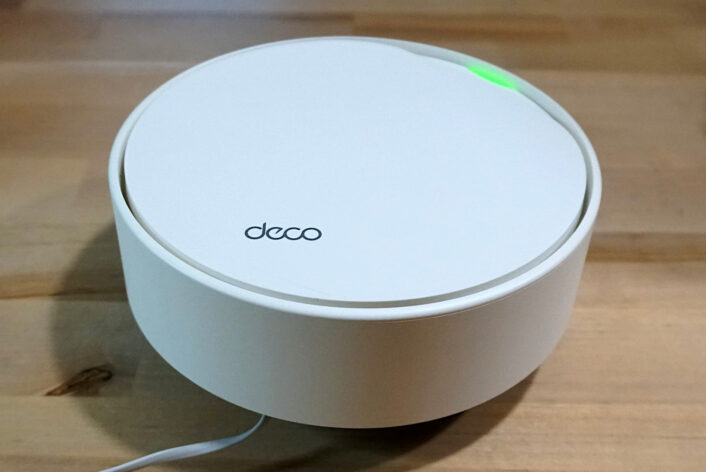 |
|
One of the best mesh systems we’ve tested |
|
Score:3.9out of 5 |
For now, the Deco X50-PoE is a pricey mesh networking system since it’s only sold in a 3-pack. But it’s great to have, especially if you need Wi-Fi in areas without power outlets. |
| Pros | Cons |
|
|
Price: $299.99*
*Amazon.com price (as of 8/3/23 12:37 MST). Read full disclaimer.
Expand for product details and ratings
| Category | Score* | Summary |
| Performance | 4 | Has good speeds for a mesh system based on our testing. |
| Features | 3 | Includes some free basic parental controls but requires a subscription for more. |
| Design | 4 | Supports Power over Ethernet networking and multi-gig internet. |
| Setup | 4 | Leads novice users through a step-by-step installation. |
| Ease of use | 4 | Offers an improved user experience thanks to a major Deco app update. |
* out of 5 points
What we like about it: The Deco X50-PoE has decent speeds, even at a long range. You’ll find some nice callouts here, too, like free basic parental controls and PoE networking.
What we wish it did better: You can set the 5 GHz channel width, but you can’t change the channel. This limitation may be problematic if other networks bombard you.
Why do we recommend it? The Deco X50-PoE is the ideal mesh networking system for business, but it’s also great for homes that need Wi-Fi in areas without a power outlet. The free basic parental controls are also nice, but that’s it in features without a subscription.
Tested speeds at a glance
| 5 GHz max speed | 2 feet | 40 feet | 120 feet |
| 1,200 | 821 | 366 | 83 |
* Speeds in megabits per second (Mbps) using a Wi-Fi 6 client and an 80 MHz channel.
| Wi-Fi specs | Wired specs |
|
|
Superfast router specs and features
Once upon a time, Gigabit Ethernet enabled fast connections in modems, routers, and other networking equipment. Now you see internet plans speeding along at 1,200Mbps and faster, and Gigabit Ethernet can’t handle those speeds. Here are a few things to look for when shopping for a new superfast router.
Multi-gig internet
A router needs a multi-gig WAN port to support internet plans greater than 940Mbps. Some routers pair a Gigabit Ethernet WAN port with a similar LAN port, and that’s okay for a combined 2,000Mbps (2Gbps) connection if your modem, gateway, or ONT supports it.
Wi-Fi 6 and newer
Be sure the router supports the Wi-Fi 6 specification or newer. It enables faster speeds than Wi-Fi 5, better traffic management, and improved multi-device support. We highly recommend Wi-Fi 6E, as it gives you access to the new 6 GHz spectrum for more attainable real-world sub-2Gbps wireless speeds.
Link aggregation
Link aggregation combines two wired ports to create one fast connection. On routers without a dedicated 2.5Gbps WAN port, look for link aggregation that pairs a Gigabit Ethernet WAN port with a Gigabit Ethernet LAN port. However, your modem, gateway, or ONT must support this feature too.
Other general router stuff
Bands – Most mainstream routers access two wireless spectrums: 2.4 GHz and 5 GHz. We suggest a three-band router for improved traffic management and better wireless speeds.
Streams – Most wireless devices have a two-transmit-two-receive (2×2) antenna configuration. You want a router that uses a 4×4 design per band at the least, so there’s less wait time as your devices stand in line to receive and send data to the router.
Antennas – Generally, the more antennas you have, the better. You only need one antenna per band, but routers use multiple antennas for features like Beamforming and MU-MIMO. You also want external antennas, as they blast a longer range than internal ones.
Our verdict
The TP-Link Archer AX11000 is our top pick router for speed. It doesn’t have the absolute fastest wireless speeds under the sun, but it’s ideal if you have a multi-gig internet connection. Plus, the eight LAN ports are ideal if you mainly want to avoid Wi-Fi altogether—you can even link two of them together for a 2Gbps wired connection. The free antivirus and premium parental tools round out a great package for the money.
Methodology
We test router speed by setting up each router in an office and connecting it to a local test server. Then, we transmit test data between our wireless devices and the server, taking numerous measurements to account for fluctuations in Wi-Fi speeds.
The first tests occur close to the router, without obstructions—so the Wi-Fi is as strong and fast as it’s gonna get. We repeat the process straight out at 10, 20, and 30 feet, with only a glass door obstructing our view of the router. The same glass door and an exterior door blocks our path when we test outside at 40 and 50 feet.
We also run tests in a hallway to the left of the TV room and office—where there’s a glass door, three walls, and an air handler unit blocking our view of the router. The dining room, another testing point, sits to the right of the kitchen, TV room, and office—two walls and a glass door block the path in this test.
To test video streaming, we connect a fast storage device to the router and stream a 4K video to six wireless devices simultaneously—two phones, three tablets, and a laptop—connected to the same wireless band.
Client devices used in testing
| iPhone 12 Pro Max | Google Pixel 3 | |
|---|---|---|
| Wi-Fi specification | Wi-Fi 6 | Wi-Fi 5 |
| Stream configuration | 2 x 2 | 2 x 2 |
| Max 5 GHz speed (AX) | 1,200Mbps | — |
| Max 5 GHz speed (AC) | 866Mbps | 866Mbps |
| Max 2.4 GHz speed (AX) | 195Mbps | — |
| Max 2.4 GHz speed (AC) | 195Mbps | 144Mbps |
Router benchmarks
Here are the average 5 GHz speeds recorded for each router. Wi-Fi speeds fluctuate significantly, so these numbers reflect at least three tests taken at each 10-foot interval.
TP-Link Archer AX11000
| iPhone 12 Pro Max | Google Pixel 3 | |
|---|---|---|
| 2 feet | 860 | 658 |
| 10 feet | 848 | 645 |
| 20 feet | 768 | 572 |
| 30 feet | 745 | 453 |
| 40 feet (porch) | 692 | 330 |
| 120 feet (across street) | 282 | 175 |
* Speeds in megabits per second (Mbps) using an 80 MHz channel.
Reyee RG-E5
| iPhone 12 Pro Max | Google Pixel 3 | |
|---|---|---|
| 2 feet | 843 | 695 |
| 10 feet | 842 | 692 |
| 20 feet | 789 | 656 |
| 30 feet | 725 | 646 |
| 40 feet (porch) | 636 | 445 |
| 120 feet (across street) | 330 | 143 |
* Speeds in megabits per second (Mbps) using an 80 MHz channel.
NETGEAR Nighthawk RAXE500
| iPhone 12 Pro Max | Google Pixel 3 | |
|---|---|---|
| 2 feet | 878 | 701 |
| 10 feet | 841 | 698 |
| 20 feet | 792 | 576 |
| 30 feet | 755 | 530 |
| 40 feet (porch) | 693 | 421 |
| 120 feet (across street) | 285 | 184 |
* Speeds in megabits per second (Mbps) using an 80 MHz channel.
ASUS ROG Rapture GT-AX11000
| iPhone 12 Pro Max | Google Pixel 3 | |
|---|---|---|
| 2 feet | 848 | 652 |
| 10 feet | 827 | 644 |
| 20 feet | 755 | 529 |
| 30 feet | 729 | 462 |
| 40 feet (porch) | 642 | 308 |
| 120 feet (across street) | 260 | 169 |
* Speeds in megabits per second (Mbps) using an 80 MHz channel.
TP-Link Deco X50-PoE
| iPhone 12 Pro Max | Google Pixel 3 | |
|---|---|---|
| 2 feet | 821 | 618 |
| 10 feet | 719 | 561 |
| 20 feet | 657 | 497 |
| 30 feet | 593 | 405 |
| 40 feet (porch) | 366 | 258 |
| 120 feet (across street) | 83 | 6 |
* Speeds in megabits per second (Mbps) using an 80 MHz channel.
Other routers we tested
We don’t recommend a Wi-Fi 5 router or mesh network system. They’re older and slower than Wi-Fi 6 and 6E products. Here’s our list of tested products we do and don’t recommend for superfast speeds.
Other routers we recommend for superfast Wi-Fi
| Model | Summary | Price* | Get it |
|---|---|---|---|
| TP-Link Archer AX90 | It has a few cool features under the hood, like VPN tools and media sharing. | $306.96 | View on Amazon |
| NETGEAR Orbi RBK752 | It’s a bare-bones system supporting multi-gig internet via link aggregation. | $274.99 | View on Amazon |
*Amazon.com prices (as of 8/3/23 12:37 MST). Read full disclaimer.
Other routers we don’t recommend for superfast Wi-Fi
| Model | Summary | Price* | More details |
|---|---|---|---|
| Amazon Eero Pro 6 | It has some free basic parental controls, but you need a subscription for some features. | $399.99 | View on Amazon |
| Gryphon AX | We really love this mesh router for its parental controls, but its lack of multi-gig internet support makes it hard to recommend. | $279.00 | View on Amazon |
| NETGEAR R6700AX | You need a subscription for parental controls and security. | $89.99 | View on Amazon |
| NETGEAR Nighthawk XR1000 | NETGEAR’s gaming router lacks in a lot of areas, including multi-gig internet support. | $299.99 | View on Amazon |
| TP-Link Archer AX20 | You don’t see blazing fast speeds with this budget-oriented router. | $79.00 | View on Amazon |
| TP-Link Deco X55 | It’s great if you need whole-home coverage on a budget but not the fastest speeds on the planet. | $199.99 | View on Amazon |
*Amazon.com prices (as of 8/3/23 12:37 MST). Read full disclaimer.
FAQ about superfast routers
Is Gigabit Ethernet not considered fast?
Gigabit Ethernet is fast compared to Fast Ethernet (100Mbps), but if you want the fastest Wi-Fi speeds available today, you need a router with a multi-gig Ethernet WAN port—or one that supports WAN and LAN link aggregation. The routers we list here mostly have multi-gig Ethernet WAN ports with real-world wired speeds up to around 2,370Mbps.
In contrast, Gigabit Ethernet is generally limited to 940Mbps max, so even if your smartphone supports a wireless 1,200Mbps connection, it can’t reach speeds above Gigabit Ethernet’s maximum.
Why are real-world Wi-Fi speeds slower?
Real-world wired and wireless speeds are slower than advertised because networking uses extra data to send and receive your data. All connections have an overhead that reduces the amount of usable bandwidth.
Under good conditions, you should see around 70% of your device’s maximum wireless speed, as defined by your device’s manufacturer. For example, the iPhone 12 Pro Max supports a data rate of 1,200Mbps, but after overhead, you may see only up to 900Mbps at close range.
What is max throughput?
Max throughput is the highest possible rate of data that can be processed and transferred from the router to all connected devices at the same time.
For example, the RAX200 has a maximum throughput of 11,000Mbps, so it can output 11,000Mbps of data across its three Wi-Fi bands at once: 1,200Mbps on 2.4 GHz, 4,800Mbps on 5 GHz-1, and 4,800Mbps on 5 GHz-2.
How far can a router reach?
A router’s 2.4 GHz signals have a range of 150 feet indoors and 300 feet outdoors—half that for 5 GHz signals. But the real-world range depends on the router’s hardware, where you place it, and the obstructions between it and your client device.
For the record, we’ve only tested two routers that can still push a sliver of data at 160 feet on the 5 GHz band: the RAXE500 and the RAX200. The 2.4 GHz band has a longer range, yes, but the speeds are much slower, so you won’t receive any data from a router at 160 feet based on our tests.
Disclaimer
Amazon.com Prices as of 8/3/23 12:37 MST. Product prices and availability are accurate as of the date/time indicated and are subject to change. Any price and availability information displayed on Amazon.com at the time of purchase will apply to the purchase of this product. Highspeedinternet.com utilizes paid Amazon links.
CERTAIN CONTENT THAT APPEARS ON THIS SITE COMES FROM AMAZON. THIS CONTENT IS PROVIDED ‘AS IS’ AND IS SUBJECT TO CHANGE OR REMOVAL AT ANY TIME.
Author - Kevin Parrish
Kevin Parrish has more than a decade of experience working as a writer, editor, and product tester. He began writing about computer hardware and soon branched out to other devices and services such as networking equipment, phones and tablets, game consoles, and other internet-connected devices. His work has appeared in Tom’s Hardware, Tom's Guide, Maximum PC, Digital Trends, Android Authority, How-To Geek, Lifewire, and others. At HighSpeedInternet.com, he focuses on network equipment testing and review.
Editor - Rebecca Lee Armstrong
Rebecca Lee Armstrong has more than six years of experience writing about tech and the internet, with a specialty in hands-on testing. She started writing tech product and service reviews while finishing her BFA in creative writing at the University of Evansville and has found her niche writing about home networking, routers, and internet access at HighSpeedInternet.com. Her work has also been featured on Top Ten Reviews, MacSources, Windows Central, Android Central, Best Company, TechnoFAQ, and iMore.
